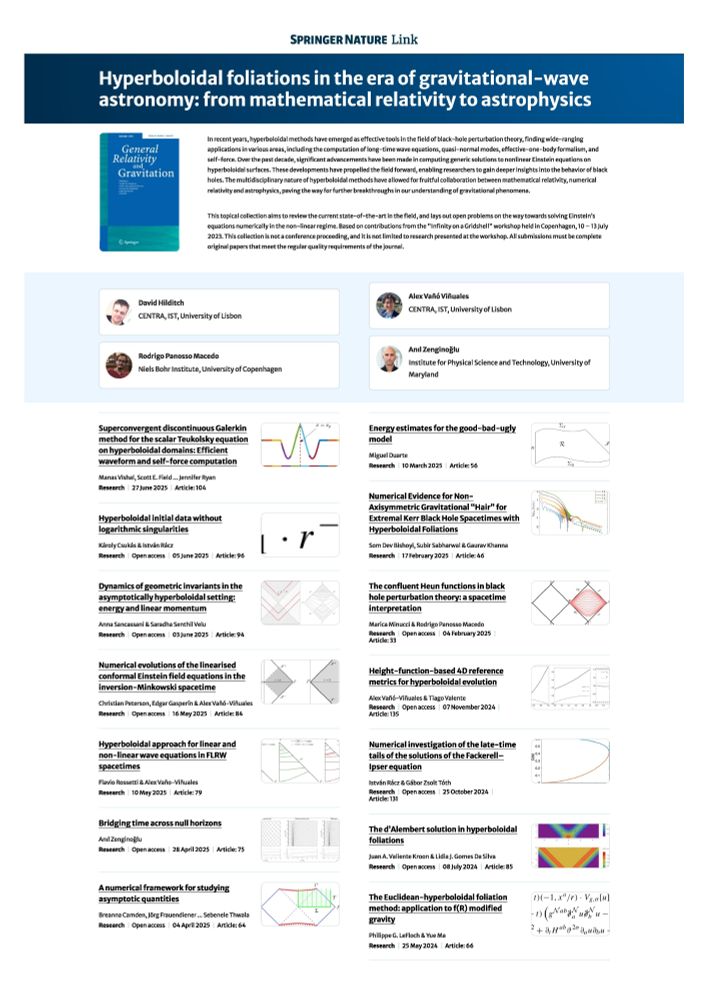
GRG article collection" Hyperboloidal foliations in the era of gravitational-wave astronomy"
On the occasion of #GR24Amaldi16, all articles in the collection "Hyperboloidal foliations in the era of gravitational-wave astronomy" are free-to-read from 10 July to 10 August 2025! link.springer.com/collections/... — Don't miss today's related talks by Anna Sancassani and Benjamin Leather!
14.07.2025 12:43 — 👍 3 🔁 1 💬 4 📌 0

Solution of a scattering problem using finite element methods with hyperboloidal compactification.
I finally got it!!!
This is a finite element solution of a scattering problem using hyperboloidal compactification.
A method developed in an unknown niche corner of mathematical relativity and conformal geometry is now ready for real-world problems!
30.04.2025 02:37 — 👍 3 🔁 1 💬 1 📌 0
The full letter is here: chronicle.brightspotcdn.com/4c/5e/044424...
18.02.2025 01:34 — 👍 0 🔁 0 💬 0 📌 0
This is the language used for DEI in a letter from the Office for Civil Rights: "a shameful echo of a darker period in this country's history."
Times are changing.
18.02.2025 01:34 — 👍 1 🔁 0 💬 1 📌 0
Physics models reality.
If our experience of reality includes the decay of energy due to radiation, the coordinate system we use should respect that.
06.02.2025 22:03 — 👍 0 🔁 0 💬 0 📌 0
A prominent example is energy.
Energy at spatial infinity is conserved in time, but energy evolving along null infinity decays.
This is a physical observable evaluated at the asymptotic limit in different coordinate systems. But the coordinates are related by singular transformations.
06.02.2025 22:03 — 👍 0 🔁 0 💬 1 📌 0
In general relativity, general covariance applies only to coordinate systems related to each other by smooth transformations.
In the presence of boundaries, general covariance is explicitly broken. Gauge-fixing must consider the boundary structure.
06.02.2025 22:03 — 👍 4 🔁 0 💬 1 📌 0
The same is true for cosmological horizons and infinity.
Moments of time must be horizon-penetrating if the horizons are at a finite proper distance and hyperboloidal (asymptotically hyperbolic) if they are at infinity.
This also breaks time-reflection symmetry and provides a direction of time.
06.02.2025 12:51 — 👍 0 🔁 0 💬 0 📌 0
After Schwarzschild discovered the first black-hole solution of the Einstein equations in 1915, it took about 50 years to recognize that time must be redefined in the presence of horizons.
The Schwarzschild "singularity" is due to the wrong definition of time, which assumes synchronization.
06.02.2025 12:51 — 👍 0 🔁 0 💬 1 📌 0
Time must be defined differently when there are horizons in space.
Our usual definition of time across space implicitly assumes synchronization via two-way communication.
Horizons only allow one-way communication, so time must be adapted to one-way communication.
06.02.2025 12:51 — 👍 0 🔁 0 💬 1 📌 0
So, horizons exist even in flat spacetime where there's no gravity or expansion of space.
If we're interested in large-scale phenomena (propagation of waves across large distances, for example), we should consider horizons. We didn't notice them before because they are far away.
06.02.2025 12:51 — 👍 0 🔁 0 💬 1 📌 0
But there are other horizons.
Because of the expansion of space, there is a limiting surface beyond which we can never see. That's the cosmological horizon.
Infinity is another one. You can send radiation to infinity but can never receive it.
06.02.2025 12:51 — 👍 0 🔁 0 💬 1 📌 0
A horizon is a limiting surface of no return. It's the boundary beyond which interaction is impossible. We can send signals beyond the horizon but can never receive signals back.
Famously, black holes were the first relativistic horizons we discovered. The event horizon is a surface of no return. 🧪
06.02.2025 12:51 — 👍 2 🔁 0 💬 1 📌 0
Buying quantum computing stocks is all fun and games until you remember that Gutenberg was practically bankrupt because of his printing press.
29.12.2024 18:36 — 👍 4 🔁 0 💬 0 📌 0
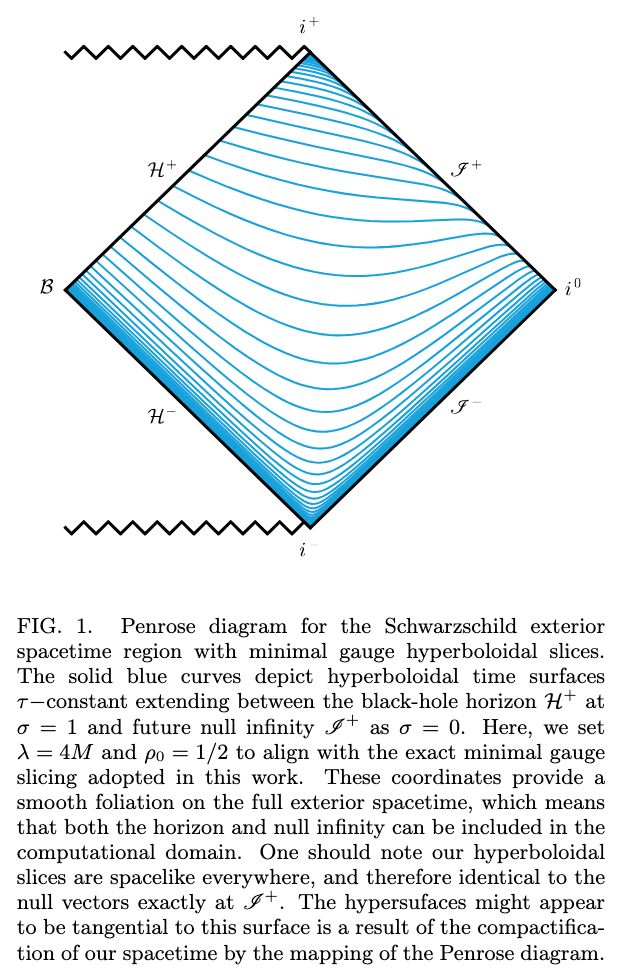
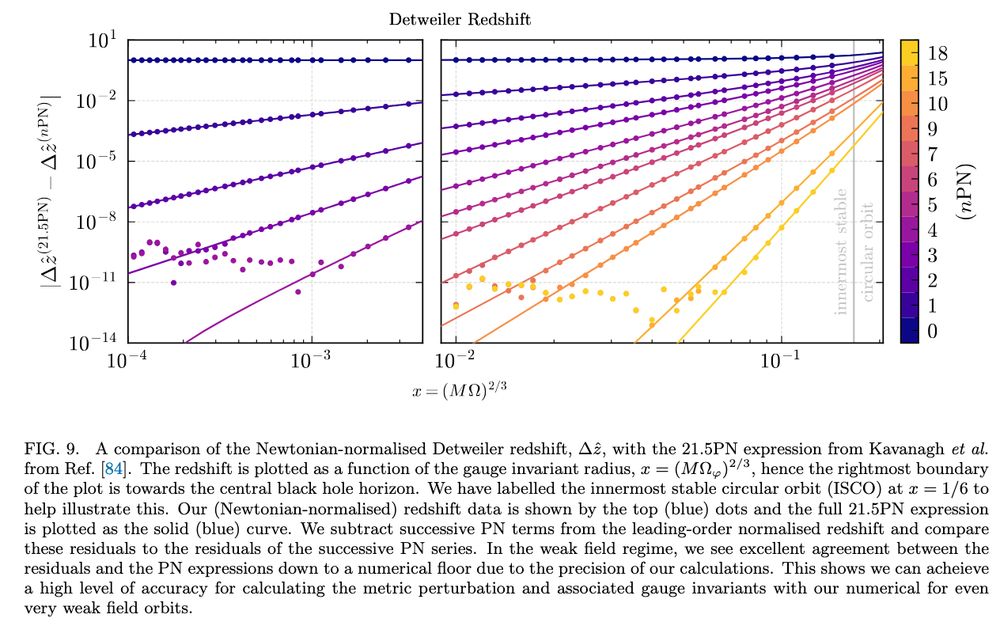
New paper the cites the BHPToolkit: "Gravitational self-force with hyperboloidal slicing and spectral methods" by Benjamin Leather, arxiv.org/abs/2411.14976
25.11.2024 09:43 — 👍 7 🔁 4 💬 0 📌 0
Thanks
24.11.2024 15:27 — 👍 1 🔁 0 💬 0 📌 0
Thanks!
23.11.2024 20:56 — 👍 1 🔁 0 💬 0 📌 0
It’s a two-way street. I believe there is work to be done at the classical level before we can understand the quantum.
23.11.2024 11:35 — 👍 1 🔁 0 💬 0 📌 0
What is time across space?
How do you construct a natural surface of simultaneity as a distant observer?
Does understanding time give us a hint about the quantum nature of gravity?
23.11.2024 09:04 — 👍 2 🔁 0 💬 1 📌 0
We live in hyperbolic times. So here's a paper about hyperbolic times, fresh off the press, published just yesterday.
https://buff.ly/3OjsJi3
23.11.2024 09:04 — 👍 4 🔁 1 💬 1 📌 0

Magritte's image of a pipe that's not a pipe.
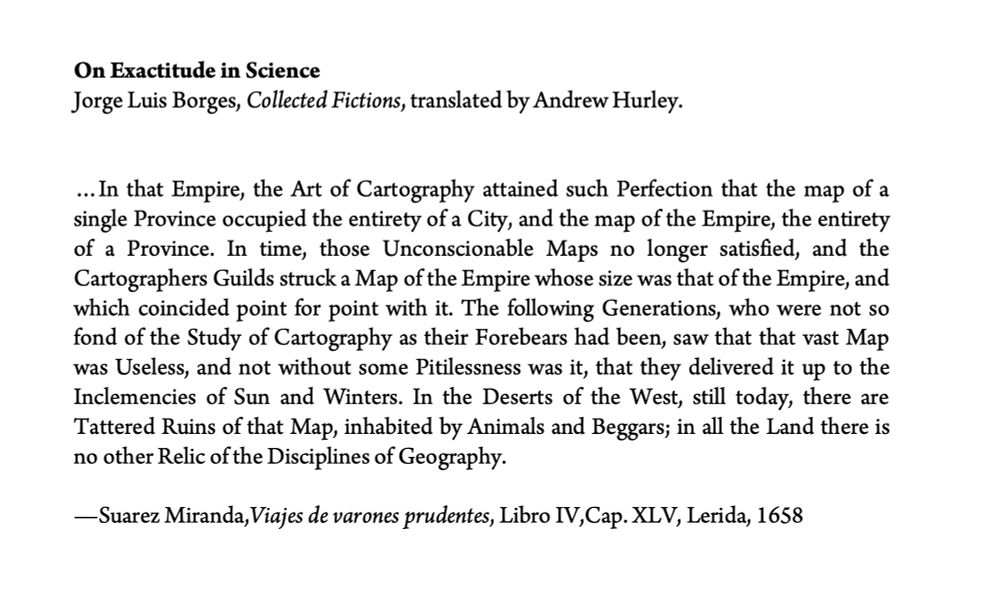
Story by Borges "On Exactitude in Science"
I use these two images in my lecture on Qubits.
Even experts sometimes confuse the map with the territory.
22.11.2024 16:56 — 👍 1 🔁 0 💬 0 📌 0
I'm most excited about the connection of hyperboloidal surfaces to holography. There are a few calculations to be made on that front, so stay tuned.
22.11.2024 16:45 — 👍 1 🔁 0 💬 0 📌 0
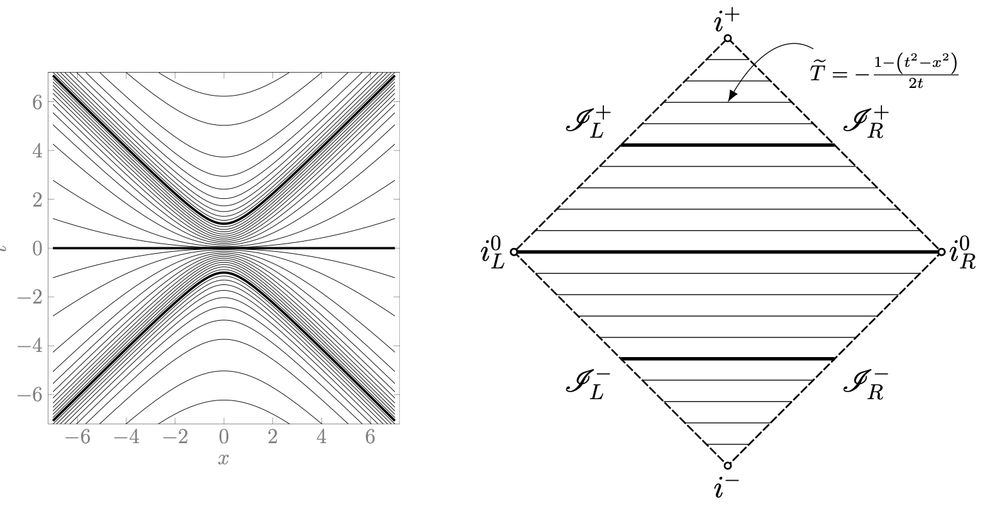
Penrose time slices are hyperboloids with varying curvature.
It is often not appreciated that Penrose coordinates are hyperboloidal. I show that Penrose diagrams are hyperboloidal, which suggests that horizon-penetrating coordinates are also hyperboloidal.
22.11.2024 16:45 — 👍 1 🔁 0 💬 1 📌 0

Timekeepers connected at a fixed proper time make a hyperboloid in flat spacetime.
The paper has some other neat ideas. You can get the hyperboloidal time slices by sending out "timekeepers" in different directions. When their clock reads a specific value, the surface that connects them is a hyperboloid.
22.11.2024 16:45 — 👍 1 🔁 0 💬 1 📌 0
Standard time slices are not hyperbolic, so the meaning of holography in physics is unclear.
I argue that natural time slices for asymptotic observers are also hyperbolic. The stacked Escher drawings are exactly how Minkowski spacetime looks like to asymptotic observers.
22.11.2024 16:45 — 👍 1 🔁 0 💬 1 📌 0
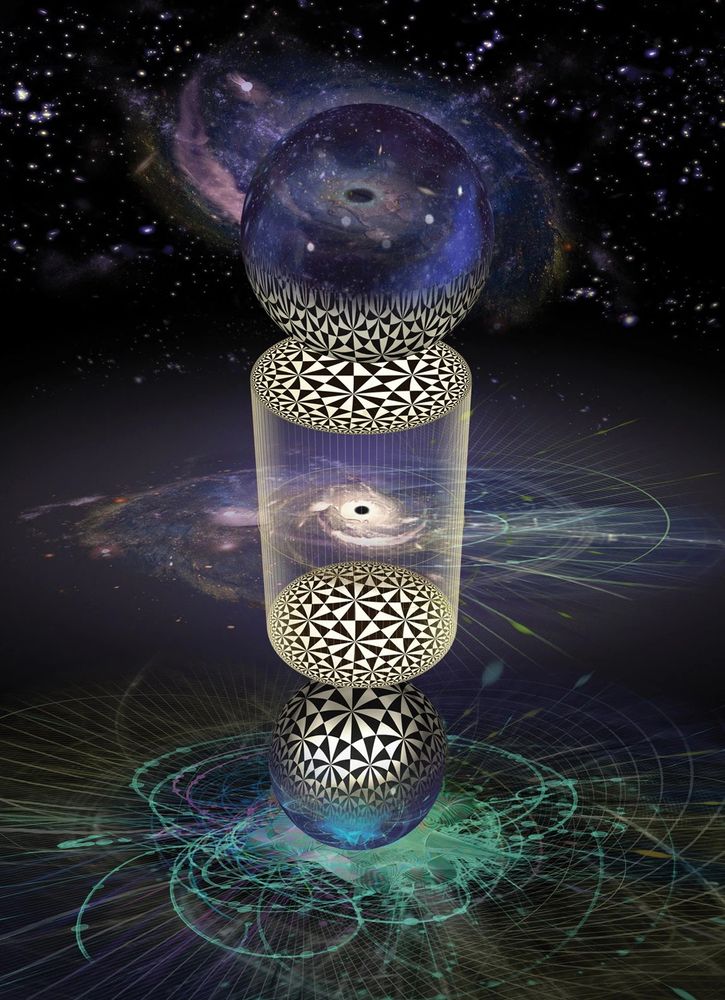
Time as a stack of surfaces with hyperbolic geometry.
By J.F. PODEVIN.
https://www.podevin.com/post/2019/01/24/einsteins-dream-of-a-grand-unified-theory
The paper argues that a natural notion of time involves spatial surfaces with hyperbolic geometry.
You might have heard about holography and the AdS/CFT correspondence, which relies heavily on the hyperbolic geometry of AdS time slices.
22.11.2024 16:45 — 👍 1 🔁 0 💬 1 📌 0
The driving question of the paper is this: What is time across space?
In other words, How do you construct a natural surface of simultaneity as a distant observer? And also, does understanding time give us a hint about the quantum nature of gravity?
Time is a mystery worth thinking about.
22.11.2024 16:45 — 👍 1 🔁 0 💬 1 📌 0
At KITP on the UC Santa Barbara campus, researchers in theoretical physics and allied fields collaborate on questions at the leading edges of science.
www.kitp.ucsb.edu
Living Reviews in Relativity publishes regularly updated open-access reviews. Its companion research journal, General Relativity and Gravitation, primarily original work. By @SpringerNature.com
Orbit in style with science socks, space jewelry, and beyond. Stellar gifts for scientists, engineers, and astronomy lovers.
ScienceSocks.co
- Executive Director, Project Drawdown drawdown.org
- Climate scientist, working on solutions
- Passionate about science, communication, and hope
- Minnesota based, Maine born
- Personal account / My views
Gravitational physicist working at the Max Planck Institute for Gravitational Physics (Albert Einstein Institute) in Potsdam, Germany.
https://www.oliverlong.info/
Astrophysicist. Burner. Reproducibility and Open Science advocate. Lefty Liberal. BLM, love is love, science works, trans rights are human rights, ceasefirenow. She/They
Associate Professor @UCSanDiego, particle theory and cosmology
Quantum information, useless information, generally informed.
Quantum algorithms researcher at phasecraft.io
https://ievacepaite.com/
Professor of Physics at UCSB: Research, Teaching, and Science Communication (TV/Movies/Books/etc). Get my graphic book on science here: http://thedialoguesbook.com and see my blog here: http://asymptotia.com
Pseudo-Physicist | PhD student | Playing with Gravitational-Wave detectors @ UC Riverside | Linux Enthusiast | Mustache-bearer | Runner | Feminist | 🇪🇺🏳️🌈
PhD student U.Minho/U.València - ML for gravitational waves @Virgo
#chess player / #python enthusiast
#livros #tecnologia #politica
📍 Valencia/Aveiro
astrophysics phd | eccentric bbh systematics | @AstrophysicsRIT @RITTigers | she/her 🔭🌌
http://kjtwagner.github.io
PhD student at the Max Planck for Gravitational Physics in Potsdam and University of Maryland. Working on ML for Gravitational waves and astrophysical populations.
Trying to summarize that papers I read
PhD student in Gravitational Wave Astrophysics, at Gravity Exploration Institute, School of Physics and Astronomy, Cardiff University.
Also interested in Language, Literature, Film, Music and Solitude.
Professor and Head of School of Physics at the University of Sydney. Radio astronomer looking for transients and gravitational wave events. OzGrav CI. Teaching physics and the apocalypse. https://taramurphy.github.io
Views expressed here are my own :)
Gravitational wave astronomy, AI/ML, data analysis & source modeling for mergers or black holes and neutron stars
Physics & Center for Computational Research @ University of Rhode Island
Mathematician/particle physicist turned privacy researcher. Java Rockstar #Oxford Building a better web - private, self-sovereign identity, p2p, social - with @peergos.org. Public social media undermines democracy. #covidisairborne #maskswork #cleantheair











